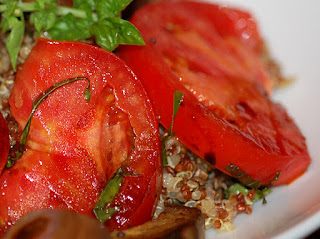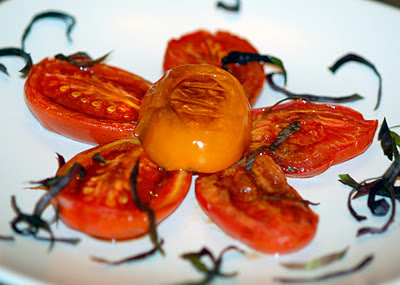I realize that at this juncture—despite your best intentions to hear me out—certain pressing questions may occur to you, including but not limited to:
(a) Don't people usually ask Santa for presents for Christmas, not birthdays? and
(b) Aren't these people usually under the age of 10? and
(c) Aren't you not under the age of 10? and
(d) Don't we usually focus on gifts for the person actually having the birthday rather than associated household members? and
(e) What on earth is a noodle extruder?
Fortunately for you, Santa proceeded to actually get me a noodle extruder for my husband's birthday, which means I can answer (e) with pictures. It doesn't really shed light on (a) through (d), except to point out that my request wasn't nearly as futile as you (and, frankly, I) originally assumed. I'm thinking Santa might be a closet foodie.

According to various online dictionary sources, a noodle extruder is: "Not Found," which is in direct contrast to my own personal experience and suggests that the authors of said dictionaries may not be in particularly good North Pole standing.
Which leaves defining a noodle extruder to me. And, technically, Google. Which would probably do a much better job. But you're here now, so why not stay?
Perhaps unsurprisingly, a noodle extruder's main business is to extrude noodles. You put the pasta dough in the top, turn a crank, bounce up and down once or twice before noticing that you're right in front of the kitchen window and several neighbors are passing by looking in curiously, rearrange your facial features into a solemn and nonchalant "whatever, I'm just here extruding some noodles" expression, and then forget yourself in the next instant as you catch a glimpse of the first homemade fusilli you've ever made just starting to peek out (see bounce-inspiring photo above).
 Then you cut the noodles, turn the crank some more, stop suddenly as if struck by a brilliant idea, pull down the shade so you can bounce in peace, and continue on your merry way accumulating an entire cutting board full of endearingly misshapen fusilli. Or macaroni. Or bucatini. Or whatever your favorite shaped pasta happens to be.
Then you cut the noodles, turn the crank some more, stop suddenly as if struck by a brilliant idea, pull down the shade so you can bounce in peace, and continue on your merry way accumulating an entire cutting board full of endearingly misshapen fusilli. Or macaroni. Or bucatini. Or whatever your favorite shaped pasta happens to be.Of course, there are still a few tricks to iron out. The multigrain pasta dough recipe we use for our pasta machine ended up a little too tacky to make perfect noodles, which need a bit more structure to stand up without folding in on themselves. And perhaps each noodle shape needs its own tailored dough recipe. We clearly won't know until we've tried every one. And because we are selfless, generous cooks who care first and foremost for the welfare of our readers, we are going to do this. For you. And for Santa. Because we care. Also because the kitchen shade is still down, so no one can see if we're bouncing.
Bucatini, anyone?



























